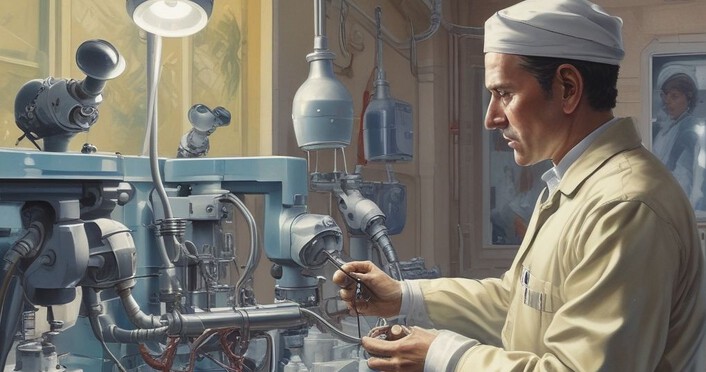CT Colonoscopy

CT Colonoscopy versus Traditional Colonoscopy
CT Colonoscopy has a broad range of user in the diagnosis and treatment of colorectal cancer and polyps. The side effects and complications arising from this method can be related with the procedure used. Such side effects include sedation complications, colonic hemorrhage and perforation. Moreover, patients my experience a lot of discomfort and thus might choose not do this test for such reasons.
Objective of the study
The aim of this study is to conduct a systematic to find out whether Virtual colonoscopy can be sufficient for detecting colon cancer in its early stages or whether it is superior to the traditional colonoscopy in performing the same task.
Introduction
Colorectal cancer is a leading cause of many deaths in the United States and many parts of the world. It has been noted to be the number three among the common cancers diagnosed in both men and women in United States (Patel, Chang, 2016, 1). Thus the challenge is to find a reliable method of diagnosis that has minimal side effects and with maximum reliability such it will allow the cancer patients to be comfortable while undergoing the test and be willing to undergo the same procedure repeatedly. Writers who offer nursing assignment help at Edudorm essay writing service notes that nearly all the colon cancers result from polyps among the individual with inflammatory disease of the bowel, or those with having an inherited type of colorectal cancer although most develop in people who have little or are no predisposed to genetic malignancy (Patel, Chang, 2016, 1). A person has a better chance of survival for 5 years after the diagnosis if the cancer is detected early which emphasises the need for colorectal screening to be accurate, reliable, safe, and cost-effective. The tests for colorectal screening can be either for cancer deterrence or cancer detection. CT colonoscopy or virtual colonoscopy is one test that is used for the purpose of detecting polyps and cancer screening is recommended after every five years (Patel, Chang, 2016, 1).
Literature review about CT colonoscopy
CT colonoscopy has come up as an alternative method to the traditional optical colonoscopy. Other tests for detecting polyps and cancer include the general colonoscopy which is recommended after every 10 years, flexible sigmoidoscopy that is done for every 5 years and a barium enema for double contrast that is recommended after every 5 years, occult blood test on faecal matter which is Guaiac based and it is recommended yearly and, immunochemical test on faecal matter done yearly and DNA test on stool which should be done after 3 years (Patel, Chang, 2016, 2).
Therecommendation by ACS states that screening be done from the age of 50 years in both men and women who show no symptoms. Patients with a history showing high-risk conditions whether personal or family related, should undergo screening earlier. Authors who offer nursing writing help at Edudorm essay writing service indicates that the conditions that predisposes one to the disease include ones history of colonic adenomatous polyps, previous cancer of the colon, juvenile syndrome of polyposis, and hereditary cancer of the colon and inflammatory disease of the bowel which is chronic (Patel, Chang, 2016, 2). ACS recommends that patients who have a family history of colon cancer and adenomatous polyps especially in first-degree relatives below 60 years, the screening should start at 40 years or 10 years right before the index case of the youngest whichever comes earlier. It also recommends that people with relatives who have a colon cancer history at an age of above 60 years should start being screened at 40 years of age. The earliest age recommended for colon cancer screening is 10-12 years of age for people having FAP and 20-25 years of age or 10 years before youngest case in immediate family of people having HNPCC (Patel, Chang, 2016, 2).
CTC procedure involve three steps that include bowel preparation, scanning of the abdomen using helical CT or MRI and finally image analysis. Preparation of the bowel should be optimal to ensure accuracy in Virtual Colonoscopy results. If residual faeces are present, it may result to the stimulation of polyps or masses and any fluid retain can lead to unclear subtle lesions. Before the scanning process, a patient should undergo the cleansing of cathartic bowel. An oral different agent should be added to the regimen used in the cleansing so as to make residual water or faecal matter visible. Tutors who offer Medicare assignment help at Edudorm essay writing service points that during the scanning, the patient may need one or more of following, intravenous contrast, pharmacologic relaxation of the bowel, contrast enema, distention of the colon using gas. The purpose of bowel preparation is to have a colon that is clean and well distended (Vining, 1999, 1). For the traditional colonoscopy, the preparation require patients to drink a lot of solution the night before they underwent the test, and it and it also involved sedation. Thus because sedation is not a requirement, the patients can leave the CT suite immediately after undergoing the process without needing to be observed or waiting for recovery (University of Chicago ,2016,1).
According to studies done, CTC has come out as a better alternative or one that can complement the shortcomings of the traditional colonoscopy in detecting colon cancer and polyps. It has more sensitivity and more specific result than the traditional colonoscopy while detecting polyps. In regard to comparison between CTC and OC, various met- analysis suggestion is that CTC has excellent sensitivity on average in identifying the patients with colon cancer that is 96% for a range of between 80-100 percent and a sensitivity that is very good on average that is 82-93%, a range of 48-100% and a specificity of 97% for patients with large adenomas. Some conflicting studies have however shown that CTC sensitivity being quite low, with a range of 55% to 64% but a retrospective analysis of the resulting data showed that most of the missed polyps were as result of perpetual errors. A criticism on the foresaid study raised the concerns of lack of adequate training and experience by the readers (Fisichella, 2009, 15).
As earlier stated, CT colonoscopy is used as a complement for the traditional optical colonoscopy and it applies for in patients where traditional colonoscopy has been incomplete or failed altogether which may arise from reasons that include colorectal cancer, redundant colon diverticular disease and much more factors. It is also used together with traditional optical colonoscopy so as to bring out the dialysis and also to stage the pathology. Moreover, it can be used for examining the abdomen for the spread of tumour, metastasis of the visceral and lymph node as well as staging (Thakur, Sood, Makhaik, Sharma, Chauhan, Thaku, 2013, pg 7). Thus it can be used to show various results simultaneously. Experts who offer nursing essay help at Edudorm essay writing service notes that another advantage is that CT colonoscopy has lesser reported cases of complication than the traditional colonoscopy considering the reported rate of perforation is 0.03% and 0.009% in that order. Moreover, CT colonoscopy is preferred in those patients with contraindicated optical colonoscopy like in patients having severe disease of cardio-pulmonary, coagulation abnormities’ or the weak patients who may not withstand the whole procedure(Thakur, Sood, Makhaik, Sharma, Chauhan, Thaku, 2013, pg 7).
Comparison between the Conventional and Traditional Colonoscopy
In a comparative research between the conventional/traditional colonoscopy and the virtual colonoscopy in assessing the preference of the patients, 168 of 236 patients representing 71% were of the view that the traditional colonoscopy is, more painful than CT colonoscopy and it involved embarrassing examinations but they viewed burden on CT colonoscopy as being minor and negligible (Ayman, Hazem, Hossam 2013, 6). Thus, traditional colonoscopy is seen to be very invasive meaning it makes the patients vey uncomfortable while undergoing the screening procedure. In the same study only 19% did not find large difference between the two techniques. It was also concluded that the inpatients those patients who complained of discomfort while undergoing the CT colonoscopy procedure could be offered verbal reassurance without using any sedatives or analgesics. However, during the traditional colonoscopy 18 out of 25 patients undergoing the procedure had complains on different measures of pain and 10 out of them had to be injected with sedative and analgesic drugs or both for them to complete the entire examination (Ayman, Hazem, Hossam 2013, 6). The study has been supported due with various reasons. Generally CT colonoscopy implementation is simple and reliable. Writers who offer nursing case study help at Edudorm essay writing service points that it is highly accepted by patients because the entire examination lasts for only few minutes and it causes less pain since there is limited manipulation of its mechanical part. Also there is elimination of the risks associated with sedation which is not required in CT colonoscopy. (Ayman, Hazem, Hossam 2013, 6).
CT colonoscopy has a significant reduction in radiation dose. In accordance with practice parameters of ACR, the protocol parameters of CT colonoscopy, the CTDI values should be maintained at or less than 6.25mGy per position of the scan , or total of 12.5mGy for the position of supine and prone Patel et. al 2016). At the current age of screening a population that is at an average, this dose of radiation is not significant clinically. This is also supported by the statement of Health Physics Society of 2010, which confirms that at such low levels , the radiation effects on healthy is too minute to be seen or they do not exist. The reduction of radiation is even further with the latest CT scanners generation which is equipped with more mechanisms of reducing the dose administered such as dose modulation that is automatic and an iterative reconstruction which function to reduce the dose of radiation and the submillisievert CTC is possible because of it enough power to compute and reconstruct time (Patel et. al 2016, 4).
CTC is also cost effective due to its record of accuracy, taking short time in examination and its good record reproducibility. When all the related costs are put into consideration, such as sedation, nursing, higher rate of polypectomy, nursing and charges on resulting from pathology, CTC is found to be a cheaper alternative in screening colon cancer than the best traditional offer of optical colonoscopy (Patel et. al 2016). Tutors who offer Medical case study help at Edudorm essay writing service indicates that considering different cost effective analyses done on the cost-effectiveness of CT colonoscopy , the model with most convincing results of the analysis has not only shown that CTC is not only effective cost wise than not undergoing the screening but it is also cheaper than the traditional colonoscopy. In addition, when consideration is put on other information that is detected on CT colonoscopy set of data, the use of CTC is more attractive when compared to other options of screening colon cancer (Patel et. al 2016, 4).
Challenges of CT Colonoscopy
CT colonoscopy has its challenges which must be addressed for it to be an effective technique of screening. To begin with, it requires accessibility of helical CT and MRI scanners, which are devices coming up to set up the standards in most hospitals, and for the virtual colonoscopy systems to be a success in terms efficiency and accuracy and processing data of images, it may require some software features that are unique and this mean additional costs (Vining, 1999, 4). The system also requires trained technologists properly trained, more so radiologists who have experience in interpreting the images of the system. Another challenge is that CT colonoscopy has come been criticized by the endoscopic community due to its inability to spot diminutive polyps which are 5-mm or less. Experts who offer pharmacology course help at Edudorm essay writing service points that the radiologist and gastroenterologists will in future have to come to a consensus on the poly size detected by this system that will necessitate poly removal by colonoscopy. Moreover, CT colonoscopy will need a reimbursement rate that is competitive in order to make appealing to the performing radiologists and for it to win the support of the insurers (Vining, 1999, 4). The system will also have to be accepted by the financing authority as an effective procedure for screening colorectal cancer which may require lobbying organized by the radiologic organizations, the entire industry and the groups that advocate for health. This may be necessary for the virtual colonoscopy to be a reimbursable method of screening. The greatest challenge however, is for the system to be accepted by insurers, physicians for primary care and the whole public. A national survey revealed an only small percentage of eligible people have used the CT colonoscopy for screening. There is need for education programs aimed at changing the perception of the public towards the screening for colorectal cancer (Vining, 1999, 4).
Conclusion
CT colonoscopy has caught the attention of the public due to its potential for reduced discomfort, increased convenience, cost and risks that are considerably low in comparison with traditional colonoscopy in screening colorectal cancer. Thus , the gastroenterologists should readily accept the virtual since it gives additional possibility of attracting patients to take part in the screening of this cancer that is a major contributing factor to many deaths not only in United States but globally. It also should be used to complement the traditional colonoscopy, and the gastroenterologists must acquire the training about the technique, interpretation of image data and various limitations of the system to apply it appropriately. This will go a long way in avoiding technical errors and the occurrence of misinterpretation of information. Although the CT colonoscopy is feasible technically, various economic, political and social matters should be solved first before the system can takes its place in radiology.
References
Patel D, Chang J (2016). The role of virtual colonoscopy in colorectal screening.pg 1-6
Vining, J (1999). Virtual Colonoscopy .W.B. Saunders Company. pg 1-4
The University of Chicago (2016). Virtual Colonoscopy for Patients.
Fisichella V.A (2009).CT Colonography: implementation and technical developments: University of Gothenburg.pg 15
Thakur, Sood, G., Makhaik S, Sharma B, Chauhan, A., Thaku, S. (2013). Evaluation of the efficacy of Virtual Colonoscopy in assessment of colorectal lesions using conventional Optical Colonoscopy as the gold standard. Pg 7
Ayman O., Hazem H., Hossam. A (2013).Role of CT virtual colonoscopy versus conventional colonoscopy in the evaluation of colonic polyps. The Egyptian Journal of Radiology and Nuclear Medicine. Pg 6.


